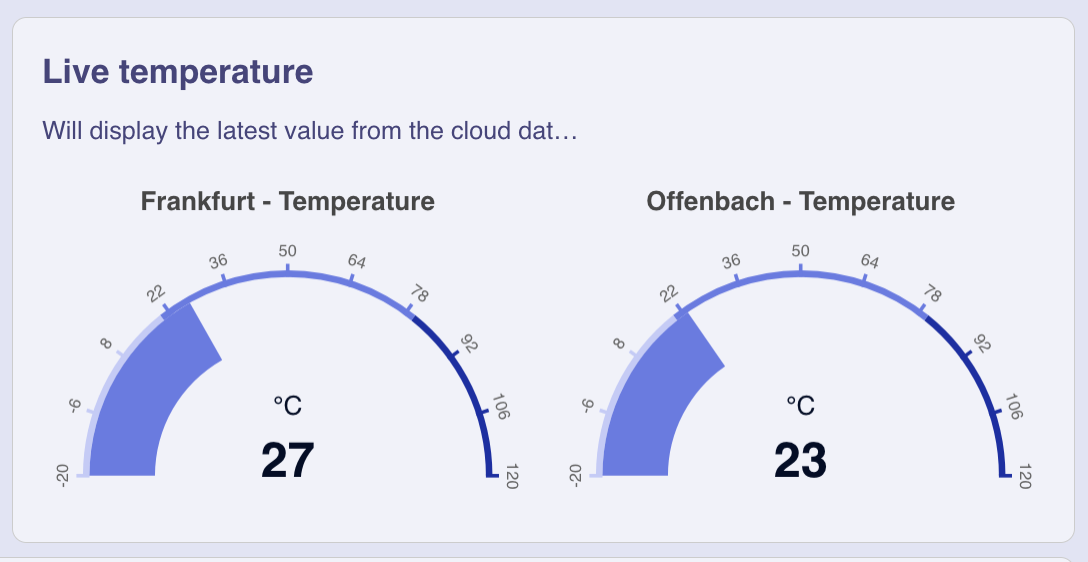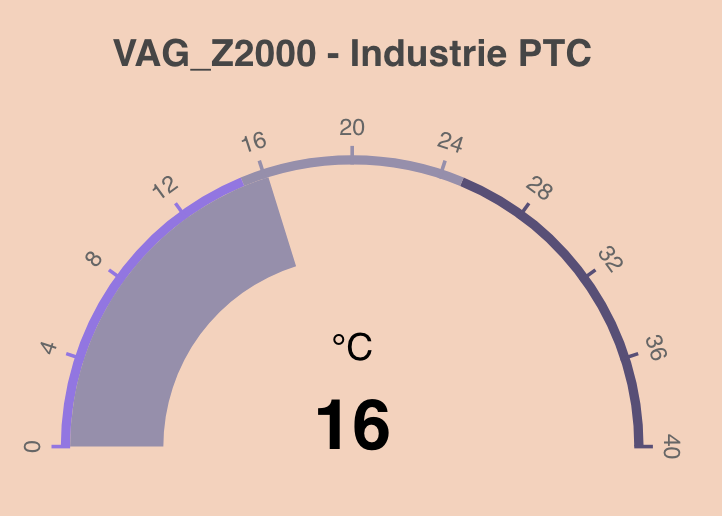npm i widget-gauge<script type="module">
import 'widget-gauge';
</script>
<widget-gauge inputData="gauge-definition-schema"></widget-gauge>To use the widget locally during development clone the widget repo and start the dev server:
npm run startThis runs a local development server that serves the basic demo located in demo/index.html
If you want to use the widget inside another project X, then add the widget as npm module to the project X as usual. i.e. in the folder of X
npm i widget-gaugeTo avoid releasing the widget-gauge on every change and updating the node_modules in X you can "link" the package locally.
Go to your local widget-gauge git repo and do
npm linkThis create a global symbolic link on your environment. Now go to your project X git folder and do
npm link widget-gaugeThis replaces the already imported widget-gauge package with your local widget-gauge git repo. Since this node module is linked all changes you make in your local widget-gauge repo will immediately be visible in project X.
The Gauge-Widget is part of the widget series for the IoT dashboard builder. While the Record Evolution platform provides various IoT functionalities, building Dashboards is one of them. As of now, around 10 widgets are available for usage and each widget is publicly accessible on Github.
In order to make use of your own custom widgets we provided a boilerplate function that will set up the file structure required by us including a builder for development and production. As we’re big supporters of the Web component standard the repository is following their guidelines and is built with the JavaScript framework Lit. And can therefore be integrated into any other project regardless of the library.
The main files in the repository that describe and provide your widget with data are the definition-schema.json and the default-data.json. As you can see both files are JSON files and therefore rely on the JSON schema format in order to have a standardized representation of the data and a simple validation logic.
The definition-schema describes the data structure your widget code will consume. Once the widget is released to our platform the JSON schema will be rendered into an input form and therefore significantly reduces complexity for the user when mapping data according to the definition schema. While our schema relies on the JSON schema standard we provided some extra features to simplify things. This includes the sorting of input fields with the order value. Extra data types for colors and enum fields in order to render color picker and dropdown elements.And the buffersize to regulate the interval data is requested in.
{
"title": "Configure the Widget",
"type": "object",
"properties": {
"settings": {
"title": "Global Settings",
"type": "object",
"order": 1,
"properties": {
"title": {
"title": "Title",
"type": "string",
"order": 1
}
}
},
"dataseries": {
"title": "Dataseries",
"type": "array",
"order": 2,
"items": {
"type": "object",
"properties": {
"backgroundColor": {
"title": "Color",
"type": "color",
"order": 3
},
"data": {
"title": "Data",
"description": "The data used to draw this data series.",
"type": "array",
"order": 4,
"buffersize": 100,
"items": {
"type": "object",
"properties": {
"x": {
"type": "string",
"required": true,
"order": 1
},
"y": {
"type": "number",
"required": true,
"order": 2
}
}
}
}
}
}
}
}
}As the file name already describes the default-data provides some fallback data that follows the given definition structure. The following format represents the data according to the provided definition-schema shown above:
{
"settings": {
"title": "New widget"
},
"dataseries": [
{
"backgroundColors": ["#AAC8A7", "#F1C27B", "#FF9B9B"],
"data": [
{
"value": 90,
"pivot": "Frankfurt"
}
]
},
{
"backgroundColors": ["red", "green", "blue"],
"data": [
{
"value": 34
}
]
}
]
}

